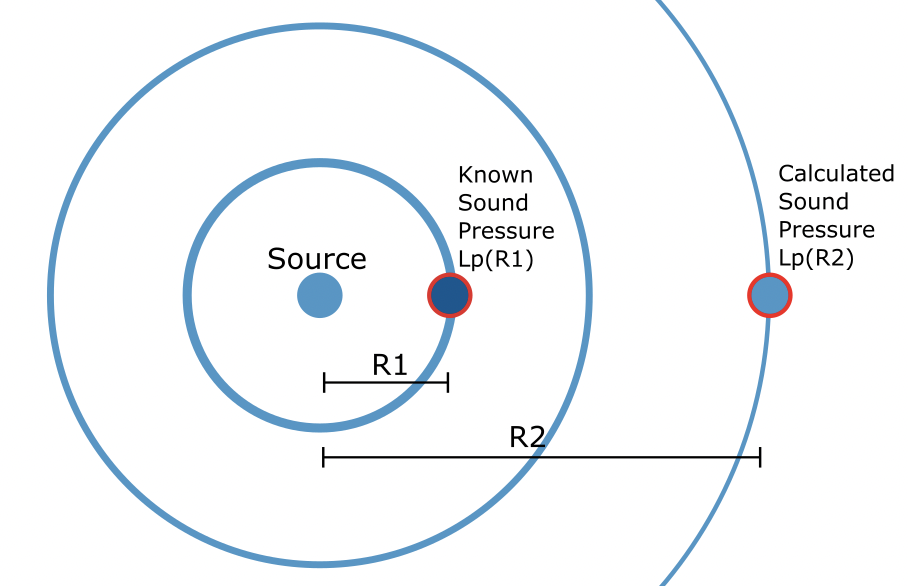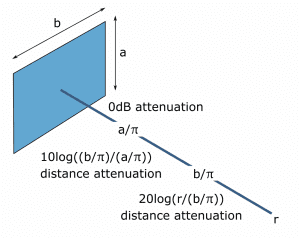What is a Point Source?
If a sound source is so small in all dimensions, when compared to the distance a receiver is located, this can be considered a point source. A true point source radiates sound equally in all directions. Examples of point sources could be a condenser or a generator (where the receiver is a significant distance away). For every doubling of distance, the sound level from a point source decreases by 6 dB.
How to Calculate Sound Attenuation from a Point Source?
This can be estimated using the Inverse Square Law, the formula of which is:
LP(receiver) = LP(source) – 20 x log10 (R2/R1)
Where:
- LP(receiver) = the calculated Sound Pressure Level at the receiver
- LP(source) = the Sound Pressure Level of the source (e.g. manufacturer noise data or measured levels)
- R1 = distance in metres from the sound source to the location of LP(source) (e.g. the manufacturer noise data may have been measured at 1 metre)
- R2 = distance in metres from LP(source) to the location of LP(receiver)

| Calculate Point Source Attenuation Here: | |
|---|---|
| Sound Pressure Level at R2: | |
| Distance Attenuation: |
What is a Line Source?
For a line source, the sound is spread out cylindrically in a line in one dimension. The distance the sound is spread out in a line is large when compared to the distance a receiver is located. Examples of line sources could be busy roads and rail lines or duct work. For every doubling of distance, the sound level from a line source decreases by 3 dB.
How to Calculate Sound Attenuation from a Line Source?
Line Source attenuation can be calculated using the following formula:
LP(receiver) = LP(source) – 10 x log10 (R2/R1)
Where:
- LP(receiver) = the calculated Sound Pressure Level at the receiver
- LP(source) = the Sound Pressure Level of the source (e.g. measured levels)
- R1 = distance in metres from the sound source to the location of LP(source) (e.g. the road may have been measured at 10 metres)
- R2 = distance in metres from LP(source) to the location of LP(receiver)

| Calculate Line Source Attenuation Here: | |
|---|---|
| Sound Pressure Level at R2: | |
| Distance Attenuation: |
What is a Plane Source?
If the sound source is large in both horizontal and vertical directions, when compared to the distance to a receiver, it can be thought of as a plane source. Examples of plane sources could be building walls or louvres.
The sound attenuates at different rates, depending on the distance from the source to the receiver:
- Near Field: no attenuation
- Medium Field: line source attenuation is exhibited
- Far Field: point source attenuation is exhibited

How to Calculate Sound Attenuation from a Plane Source?
Plane Source attenuation can be calculated as follows:
- Near field attenuation: no attenuation from 1 metre to a/π
- Medium field attenuation: line source attenuation from a/π to b/π
- Far field attenuation: point source attenuation from b/π to R
Where:
- a = smallest dimension of sound source in metres
- b = largest dimension of sound source in metres
- R = distance from sound source to receiver
| Calculate Plane Source Attenuation Here: | |
|---|---|
| Resultant Sound Pressure Level: | |
| Distance Attenuation: |
